How To Perform a Website Review

A good website review will not only tell you how to improve your SEO but it will also give you answers to the most critical questions you probably have. How do you get more traffic from Google? How to utilise social media better? Is my on-page SEO correct? How do I get more conversions? These are just some of the answers a website review can give you.
What is a Website Review and why do you need one?
A website review is a process for checking your website’s performance against a number of parameters. It is similar to an SEO audit with the difference that a website review will cover additional areas that go beyond classic SEO reviews like advanced SEO techniques, social media, content marketing, usability and conversions.
Why do you need a website review?
To say it simply, nobody is perfect and this is also true for websites. A website review will help you improve your website on areas that you either did not know that they are wrong and in aspects that can be optimised for SEO purposes but also for getting more conversions.
There are some classic examples where a website review is needed:
- When you develop your website or when you hire a designer/developer to create a new website for you or when you buy a ready made theme – Chances are that they will only focus on the aesthetic part of the website (look n feel) and not on the structure and SEO.
- When you get enough traffic to your website but no conversions.
- When you want to get more targeted traffic to your website.
- When you suddenly lost your traffic because of a Google penalty and want to know why and how to recover.
- When you want to make more sales from your ecommerce store.
- When you want to get better results from your blogging efforts.
- When you want to get better rankings in Google.
- When you want to know what other channels you can utilise to get more traffic and exposure for your website.
- If you haven’t done a website review before and you want to make sure that your web property is running optimised.
How to review your Website
There are two ways to review your website.
1.You can either do it yourself
2.You can hire professionals
Website Review Part 1: SEO
SEO is a huge topic and it is very important. As the name implies SEO is about ‘optimising’ your website for search engines. Optimisation in this context means making the job of search engine crawlers easier by giving them the right signals so that they can understand your website better. When this is done correctly you also enjoy the benefits of ranking higher in their index.
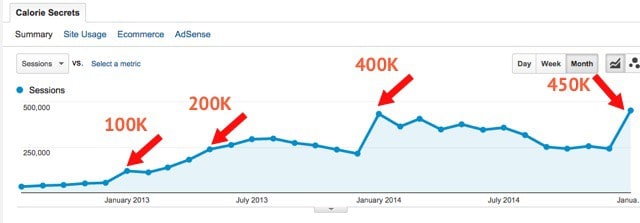
Source: Digital Marketing Pro
Search engines use a lot of factors in their ranking algorithms and in the majority of cases improvement in SEO is achieved after you do a lot of small changes (optimisations) to your website.
How to SEO review your website
The minimum things you need to check when SEO reviewing your website are:
- Your page titles and descriptions
- The website link structure and url format
- Content formatting and use of H1 tags
- Best practices when using internal links
- Use of images, video and other multimedia elements within the content of the page and use of ALT text to describe these elements to search engine crawlers.
- Website speed – The faster a website is, the better. The magic number you are targeting is less than 2 seconds.
- Proper configuration of robots.txt so that your content is accessible to search engine bots.
- Proper structure and format for your sitemap files (both posts and image sitemaps)
- Correct configuration of your 404 page (the page that is shown when users search for a page that no longer exists on your website).
- Check for broken links (either internal or external) and fix them.
- Use of breadcrumbs and user sitemap files.
- Quality of your About page.
Website Review Part 2: Webmaster tools
Google webmaster tools is a set of tools provided by Google to website owners so that they can check the healthiness of their websites. Among other things Google webmaster tools can give you information about how Google is reading your website, how many pages you have in the Google index, what keywords drive Google traffic to your website and many more.
When doing a website review you need to ensure that you check the following settings in webmaster tools:
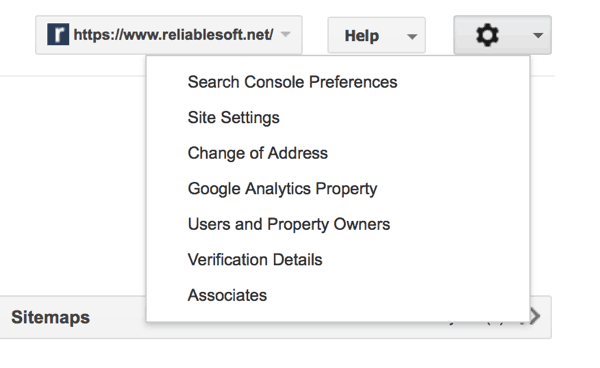
Enable email notifications in Search Console preferences (click the gear icon from the top right and select ‘Search Console preferences’ ) so that Google can contact you by email when there is an important issue regarding your website.
Select your preferred domain from the Site settings (click the gear icon from the top right and select ‘Site Settings’). It is important that the domain you choose on this screen matches the setup of your website. If your website is setup to listen to both http:// and http://www then make sure that what you select here is the same configuration you have in your website software.
Link Google Webmaster tools with Google Analytics – Linking your webmaster tools with analytics will give you the opportunity to analyse within Google analytics that data provided by Google which includes the actual queries people used to reach your website, the average position of your website for a number of terms in Google SERPS and many more useful information.
You can access this setting from by clicking the gear icon on the top right corner and selecting ‘Google Analytics Property’.
Check Search Analytics – Search analytics (found under Search Traffic) is perhaps the most frequently visited tool of search console and this is because it gives a lot of information on how your website is performing on Google Search.
After Google removed from Google Analytics the actual keywords that trigger impressions or visits to your website, the only way to get this information for free (and without using any third party tools) is the Search Analytics report.
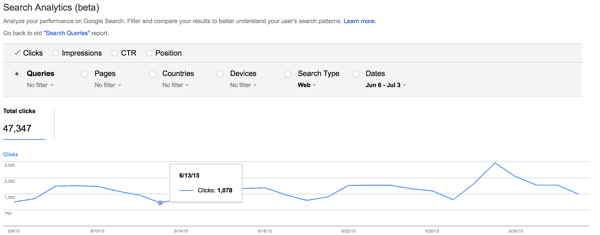
You can use the different filtering options to see your ranking position for different terms, the visits you received from each keyword, the devices used by users (desktop, tablets, mobile), countries they are in and a lot more.
If you did not know of the search analytics report before, this is your place to start when reviewing your website.
Links to your website – Another useful option under Search Traffic which shows the number of incoming links Google has recorded about your website. You can use this data to identify links that are spammy or to find out about websites that link to you but didn’t know about.
Caution: If you see a number of incoming links, not generated by you in a way, that look ‘unnatural’, don’t rush into submitting them using the disavow tool. Google most probably can identify them and discount them without further actions from your part. Use the disavow tool when really necessary.
Google does not provide historical statistics for incoming links so it’s a good practice to keep monthly statistics to keep track of changes.
Manual actions (Under Search Traffic): When Google imposes a ‘manual action’ on your website, you can see it here. If this is the case then you should follow the instructions provided by Google, make the necessary fixes and submit a reconsideration request.
A manual action negatively affects your website’s performance in Google search (either the whole website or parts of it).
Fetch as Google: Under Crawl you can find ‘Fetch as Google’. Use the ‘Fetch and Render’ option to see how Google ‘reads’ your website. It is possible that some css files and javascripts are blocked by your robots.txt and this does not allow Google and other search engines, to crawl your website using all elements.
Sitemaps: Last but not least, you should check the Sitemaps option under ‘Crawl’. This option gives you more details on how many pages from your sitemap are included in the Google index and if there are any errors or warnings in your sitemap file.
Website Review Part 3: Schemas and Structured Data
One of the problems search engines have to face every time they visit a web page is understanding the meaning of the data they crawl. To solve this problem they have agreed to a common vocabulary described in a number of schemas.
A schema is nothing but a set of rules you need to follow by adding some predefined html tags to your data so that search engines can understand what the data means. For example one of the most common schemas is the sitename.
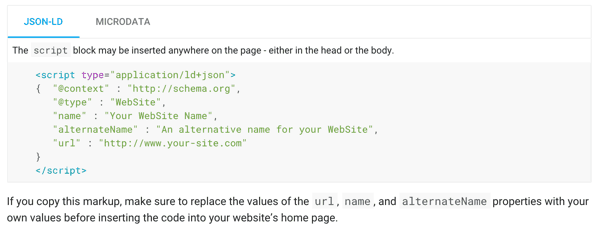
As you can see in the screenshot above, by adding theitemscope and itemprop tags around your data, you give search engines more details about your site name and URL.
Google is using schema information for its knowledge graph, answer boxes, in-depth articles, rich snippets, local seo and mobile search results and it is definitely something that you have to use for better SEO and more visibility in the SERPS.
When doing a website review, you should check that you are using all possible schemas suitable for your website. The complete list of Google supported schemas can be found here and there are also tools to test that your implementation is correct.
You can also view how Google interprets your structured data by viewing the ‘Structured Data’ report under ‘Search Appearance’ in ‘Search Console (Google Webmaster Tools)’.
Website Review Part 4: Social
Social media marketing is one of the most critical and important promotional tools available in Digital marketing. Despite all the buzz about social media the last 5 years, there are still businesses that fail to utilize social media marketing correctly and this means they are missing out opportunities that can generate more traffic and business.

Source: We are social
Before getting into the things you need to check for social media when doing a website review, let me clear a misconception about social media and SEO.
Both of these tools are necessary if you want to get the maximum possible results from our online promotion efforts. There is no question whether you need to use the one or the other, you need to use both to enforce each other’s value.
Social Media Checklist:
- Do you have dedicated social media business pages in Facebook, Google+, Pinterest, Linkedin?
- Do you have accounts in Twitter and Instagram?
- Do you have links to your social media pages in your website’s header or footer?
- Do you have share buttons in your blog or most important pages so that people can share the content with their social media friends.
- Do you post useful and interesting content on your social media pages on a frequent basis?
- Do you use hashtags and images within your social media postings?
- Do you have a Google My Business account registered for your local or online business.
- Did you confirm your website with Google+?
- Have you checked how your postings look on social media when somebody clicks the ‘share button’?
- Are you using Facebook open graph tags?
- Do you use social media advertising to increase your followers or promote your products and services?
- If you have video content, did you create a dedicated youtube channel for your business?
- Are your social media profiles, SEO optimised.
- Do you have a decent amount of followers in each channel to win the ‘social proof’ when visitors checkout your social media pages?
Website Review Part 5: Content marketing
It is a fact that in today’s competitive Internet Word you cannot do much without content marketing. Content marketing will help you differentiate your business from the rest and get you more traffic and customers from search engines and social media.
The definition and purpose of content marketing is simple: It is the production and distribution of valuable and unique content to gain more exposure in search engine result pages and also convince website visitors to become customers.

When checking your website for content marketing, you need to ensure the following:
- The content on your website is unique, useful and up-to date.
- You have no duplicate content (content that is the same on other websites).
- You use canonical tag correctly to help search engines understand your important pages and to avoid duplicate content issues within your website.
- You post new content on a regular basis.
- You allocate enough budget (or time) for content marketing since good content marketing costs more than any other promotion method but the returns are also bigger.
- Check that the posts you publish are comprehensive and cover both sides of a story i.e. that they are unbiased and not too promotional.
- Make sure that readers can identify who is the author of a post.
- Monitor user generated content (comments) and make sure that they comply with your comment policy (disapprove spammy comments and comments that add no value to the page).
- Monitor the ranking positions for your published content and examine the Click Through Rate (CTR).
- Check and ensure that your titles and descriptions are unique and interesting to crab user’s attention.
- When having a lot of published content, make sure that is organised into categories and groups that are easy for users to find and understand.
- Make sure that you add internal link to your pages. This helps both users and search engines discover more content from your website.
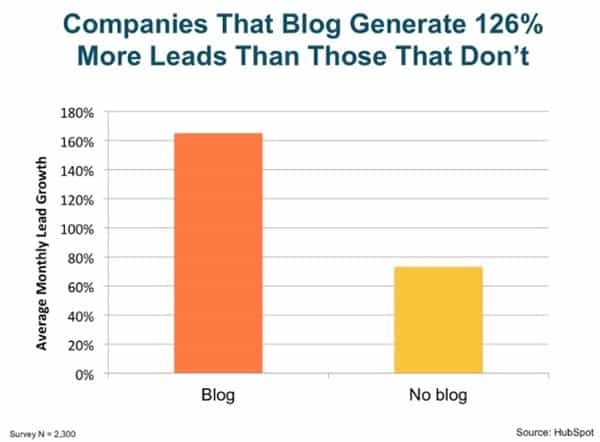
Website Review Part 6: Off Page SEO
Off page SEO is the process of promoting your website in other online properties. It is commonly known as link building, although this term has been associated lately with Penguin and Panda updates since it is often thought as a way to abuse search engine algorithms.
Off page SEO is still used by all major search engines like a ‘voting system’ which helps them determine the ‘value’ of a web page. Besides the content found on a particular page, search engines use incoming links as a signal of popularity and importance.
Of course it is not a numbers game i.e. it is not a matter which website has the most incoming links but the number and type of links plays an important role as to which website will get higher rankings.
I am not a promoter of link building, you can still create a successful website without going that way, but the truth is that a carefully planned off-page SEO campaign can help you get better results faster.
The only valid way these days to do off-page SEO is to find guest posting opportunities on highly trusted and relevant websites to promote your website.
This must not be confused with any type of guest postingwhere you throw an article with links to increase your incoming links, but this has to do with publishing your content on websites that have traffic and authority.
In the majority of the cases the links you will get in your author bio or content will be ‘no-follow’ but the benefits in exposure and readership are much more important than an incoming link.
Having said that, the things to check while reviewing your website that are related to off-page SEO are:
- Use the ‘link to your website’ report available in the ‘Search Console’ (as explained above) to find out the number and type of incoming links. Export the data in a spreadsheet and try to spot websites that are linking to you that are worth promoting in your social media channels.
- Investigate how you can make the above links stronger by either linking to them within your articles or from articles you publish on other websites. Your goal is to make the existing links that are already pointing to your website stronger and more powerful.
- Search for authority websites in your niche that accept guest posts, read their guest post guidelines and create a long term plan for getting your articles published on those websites. It is not an easy job to do, but it certainly worth’s all the effort. Read this guest posting guidefrom Neil Patel to help you get started.
- Avoid link building tactics that can get you into trouble and forget about the old time moto ‘ a link is a link’; you don’t want too many incoming links but strong incoming links.
Website Review Part 7: Mobile
We are living in a mobile World and this is also reflected in the way users are searching for information. Smartphones have become so popular and Internet usage through mobile phones has led to a result many experts have predicted for years: mobile searches are now more than desktop.
Having a mobile friendly website is no longer a choice, not only because of the volume of users that navigate the Net using mobiles but because having a mobile friendly website is a Google ranking factor (since April 21, 2015).
In simple words, if your website is not friendly for mobiles you are getting less traffic from search engines than what you could get.
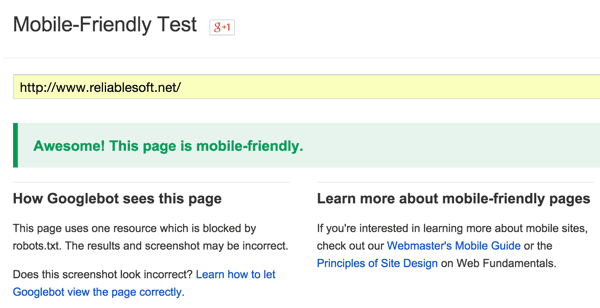
When talking about mobile, we are not only referring to people using their mobile browsers to search for information but we should take into account the millions of users searching/downloading apps through the Google Play Store, Apple Store and Amazon app store.
Here is your mobile review check-list:
- Check using this tool from Google that your website is mobile friendly. Note that the check should be made for each and every page of your website since the checks are made on a page basis and not website.
- Even if your website is mobile friendly, assess whether adopting a responsive design will give you extra advantages.
- Investigate the possibility of creating a native app for your business and upload this to the app stores. This may incur a cost but the traffic gains in the long term can justify the initial investment.
- Check the speed of your mobile website and make sure that it loads as fast as possible. Speed is a ranking factor for the desktop and soon it will be an official ranking factor for mobile so be prepared in advance.
- If you are using ads on your mobile pages, especially adsense, check that you adhere to the guidelines.
- If you are using adsense, consider using responsive ad units as these will help you increase your adsense earnings substantially.
Website Review Part 8: Conversions and Usability
All the above checks serve one purpose, to help you get more traffic to your website. Another important factor for website success is the utilization of incoming traffic i.e whether the actions performed by visitors contribute to your business goals.
All websites have goals, whether is making money from advertising, sale of products or services, growing an email list, raising brand awareness etc. When doing a website review it is necessary to evaluate the performance of the website against these goals.
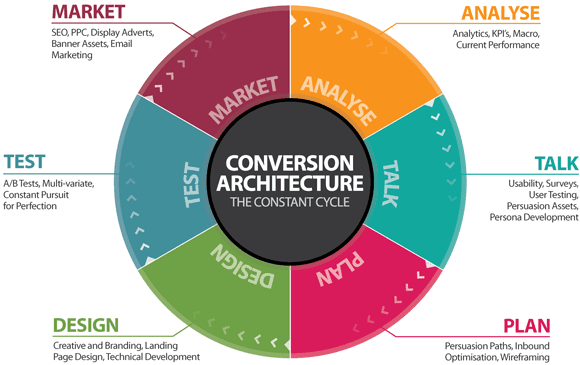
Source: Lt Creative
As you can understand, this is a huge topic and specific to the particular website that requires a lot of A/B testing but nevertheless the minimum actions you can take during a review are:
- Check your website’s bounce rate. The bounce rate is a number given to you in various Google Analytics reports that shows the percentage of people who leave your website without visiting a second page. As a rule of thumb, the lower the bounce rate the better. This is related to conversions and usability since the more time a user spends on your website the greater are the chances of converting.
- Make sure that you are using the ‘Goals’ feature in analytics to identify how many users complete a goal and also how they ended up converting.
- Familiarise yourself with the most important Google Analytics report so that you know what your visits are doing while on your website.
- Set Up Event tracking to track which buttons get clicked and use this information to change the design of your landing pages.
- Find out the pages that have the higher ‘exit rate’ and try to improve them.
How To Perform a Website Review
![How To Perform a Website Review]() Reviewed by Unknown
on
07:33
Rating:
Reviewed by Unknown
on
07:33
Rating:
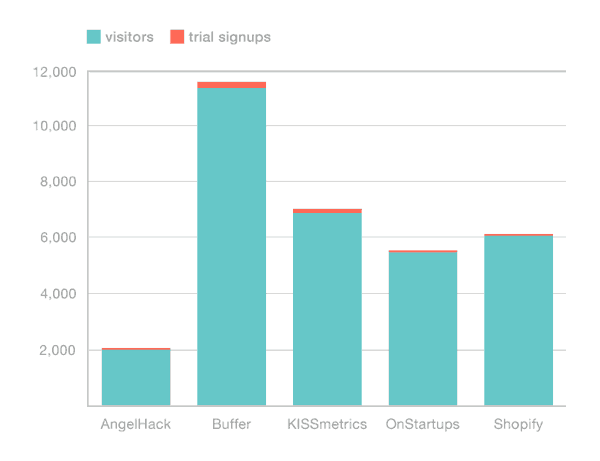


This one is a huge details about the website reviews, which helps to maintain our website with the strategies for what we are going to be improve in that. Thanks for sharing this post.
ReplyDeleteBuy mop Online | Buy Wardrobe Online
clipping path
ReplyDeleteclipping path service
car photo editing services
Enjoyed reading the article above , really explains everything in
detail,the article is very interesting and effective.Thank you and good
luck for the upcoming articles
Thanks so much for sharing this awesome info! I am looking forward to see more postsby you! tetra pak classic
ReplyDeleteI truly appreciate this blog article. Really looking forward to read more. Much obliged.how to fix broken website links
ReplyDelete